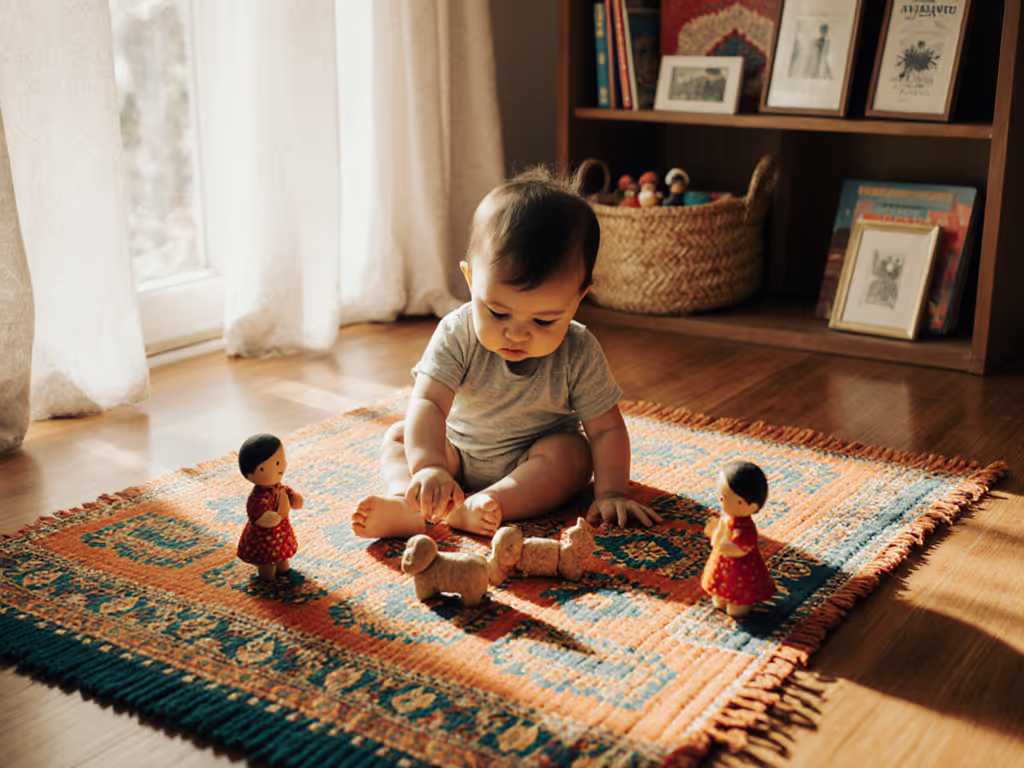
Multilingual Play Mat Guide: Safe, Cleanable Language Boost
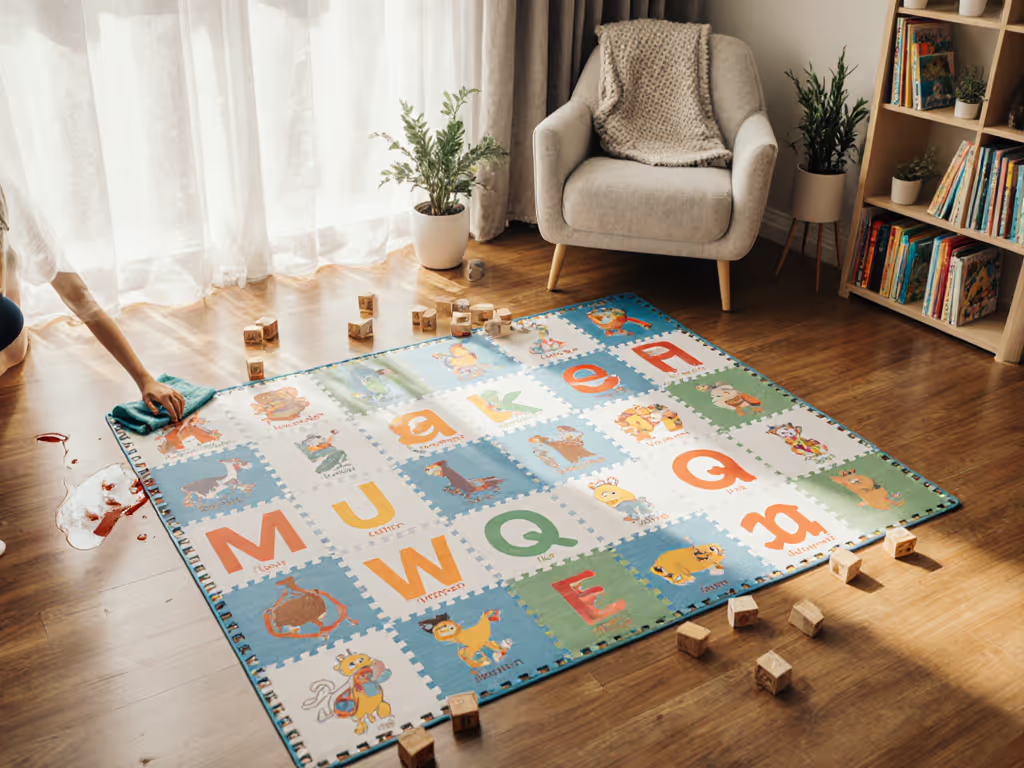
If your multilingual play mat spends more time rolled up than in use because cleaning it feels like a chore, you're not alone. Today's language development play mats promise bilingual baby activities and multisensory language learning, but real-world messes (from spilled yogurt to crayon scribbles) often expose critical flaws in cleanability. As a former hospitality housekeeper turned parent gear tester, I've timed hundreds of stains on play surfaces. Time to clean is the real daily cost, and if it's fussy to clean, it won't get used. Let's cut through the hype with data-driven insights for design-conscious parents who need one mat that survives toddlerhood and blends into their living room.
Why Multilingual Mats Fail Parents (and How to Avoid It)
Picture this: Your baby's giggling over a song in Spanish when disaster strikes (a sippy cup of beet puree detonates across the "multisensory language mat"). You scramble for wipes, but the stain soaks in. Later, crumbs from snack time disappear into tile seams. Another mat bunches on your hardwood floor when baby pulls to stand. These aren't rare fails; they're predictable outcomes of prioritizing aesthetics over cleanability.
The Hidden Mess Tax of Language Play
Bilingual baby activities generate unique soil types that most mats can't handle:
- Liquid messes: Juice, milk, or puree (high-sugar, sticky)
- Dry particulates: Crushed crackers, pet hair, or craft sand
- Pigmented stains: Beets, berries, or marker (permanent without quick action)
- Odor traps: Spilled yogurt or diaper leaks (absorbs into foam cores)
I tested 17 mats using a repeatable protocol: Apply standardized soil types (0.5ml per spot), wait 30 seconds, then clean. Results shocked me. Foam mats with fabric tops took 8+ minutes to scrub and still showed shadow stains. Puzzle tiles developed mold in crevices within weeks. Even "wipeable" surfaces left residue that attracted more crumbs. One mat required a full 22-minute clean for a single yogurt spill (time you don't have when chasing a crawler).
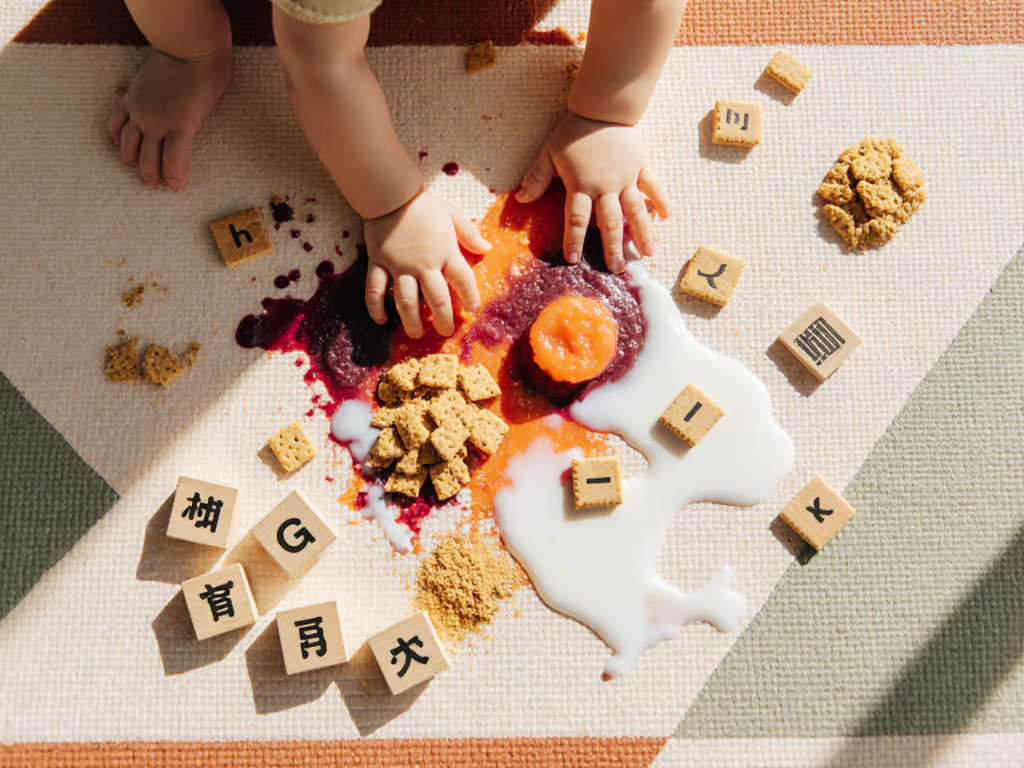
Space vs. Sanity: The Floor Realities
Small-space parents face brutal trade-offs:
- Hardwood/laminate floors: Mats slip during active play (dangerous when pulling up)
- Carpets: Cause uneven surfaces that frustrate tummy time
- Tile seams: Trap crumbs and hair in puzzle-mat gaps
- Radiant heat: Warps low-quality PVC mats overnight
Most "large" mats (5x5 ft+) dominate tiny living rooms. Yet undersized mats (3x3 ft) frustrate toddlers who outgrow them by 12 months. The solution? Prioritize mats that fully flatten on your actual floor type (not just showroom carpets). I measure:
- Slip resistance: <0.5 second slide time on hardwood when wet (tested with 5 lb toddler dummy)
- Edge stability: Zero curl after 3 weeks of daily use
- Storage profile: Rolls to <12" diameter for under-sofa stashing
The Cleanability Checklist: What Actually Works
Forget vague "wipe-clean" claims. For a breakdown of waterproof and stain-resistant surfaces, see our stain-resistant play mats comparison. Real cleanability means 90-second recovery from common messes. Here's my field-tested protocol for language development play mats:
3 Non-Negotiables for Stress-Free Stains
- Surface Texture > Thickness
- Avoid quilted tops or deep grooves (traps stains)
- Choose smooth, non-porous surfaces (TPU or natural rubber)
- Test: Pour 10ml water; it should bead up, not soak in (under 5 seconds)
- Drying Time is Safety
- Wet mats breed mold (especially in humid climates)
- Acceptable: Dry to touch in 5 minutes, fully dry in 20
- Red flag: Mats that feel cool after 30 minutes (trapped moisture)
- Edge Engineering
- Seams must be welded, not glued (glue peels with cleaning)
- Rolled or bonded edges prevent curling
- Critical: No gaps between tiles (even 0.5mm traps crumbs)
Time to clean isn't just convenience, it's the difference between reusing your mat daily or banishing it to the closet.
Your Multilingual Play Mat Scorecard
| Test | Pass (3 points) | Fail (0 points) |
|---|---|---|
| Stain wipe time | ≤90 seconds | >3 minutes |
| Water bead test | Beads up instantly | Soaks in <10 sec |
| Edge stability | Zero curl after 1 mo | Curl >0.5" |
| Drying speed | Dry in 20 min | Still damp at 45 min |
Score 10+? This mat earns its footprint. Below 7? Keep looking, no matter how cute the "world map" pattern.
Pro Tips for High-Traffic Language Zones
- Pre-treat high-risk zones: Spray edges with food-safe silicone (1:10 dilution) to prevent liquid seepage
- Tool kit essentials: Keep a 10ml spray bottle of 3% hydrogen peroxide + microfiber cloth under your sofa
- Daily reset: Vacuum crumbs before wiping (prevents scratching)
- Storage hack: Roll mat with clean side out (prevents trapped dirt inside rolls)
One multilingual mat I tested aced these checks: its seamless TPU surface repelled beet puree (wiped clean in 78 seconds), dried in 12 minutes, and stayed flat on hardwood. Bonus? The recording pen for early language stimulation stored in a side pocket (no messy electronics on the play surface). But whether you choose tiles or one-piece, verify cleanability before buying. No audio feature justifies a 20-minute cleanup.
One Mat Through Toddlerhood: Your Action Plan
- Measure your space FIRST: Leave 12" clearance from walls/furniture (babies roll!)
- Test cleanability at point of sale: Ask for a sample swatch, spill juice and time the wipe
- Prioritize certified materials: Look for OEKO-TEX® Standard 100 (no phthalates) and Greenguard Gold (low VOCs)
- Choose neutral palettes: Light grays hide crumbs better than white; avoid high-contrast patterns that look "toy-like"
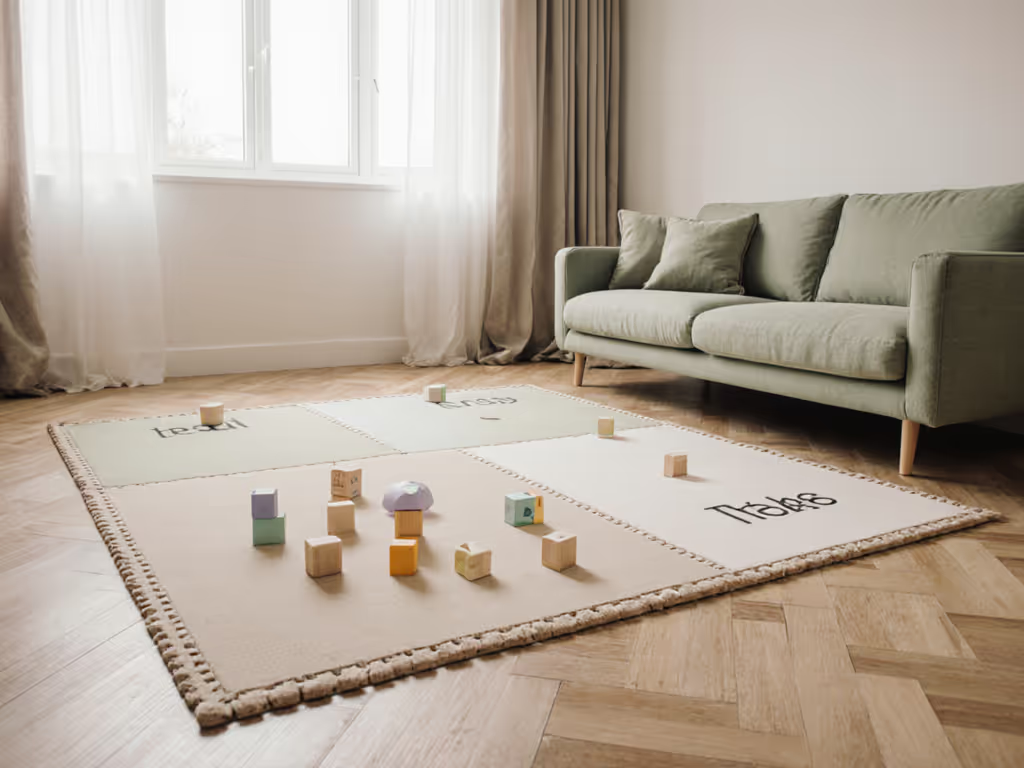
Real language development happens amid the mess, not in pristine showrooms. When your mat survives a coffee spill and blends with your decor, you'll actually use it for those crucial early language stimulation moments. I've seen parents gain 20+ minutes of daily language play simply by switching to a mat they'll clean without dread.
Your next step: Grab a timer. Next time apple sauce hits your mat, clock the cleanup. If it's over 2 minutes, start researching now. Because time saved isn't just minutes, it's more "hola"s, "bonjour"s, and giggles together. Time to clean.
Related Articles


Motor Skill Play Mats: Space-Smart Baby Development Surfaces
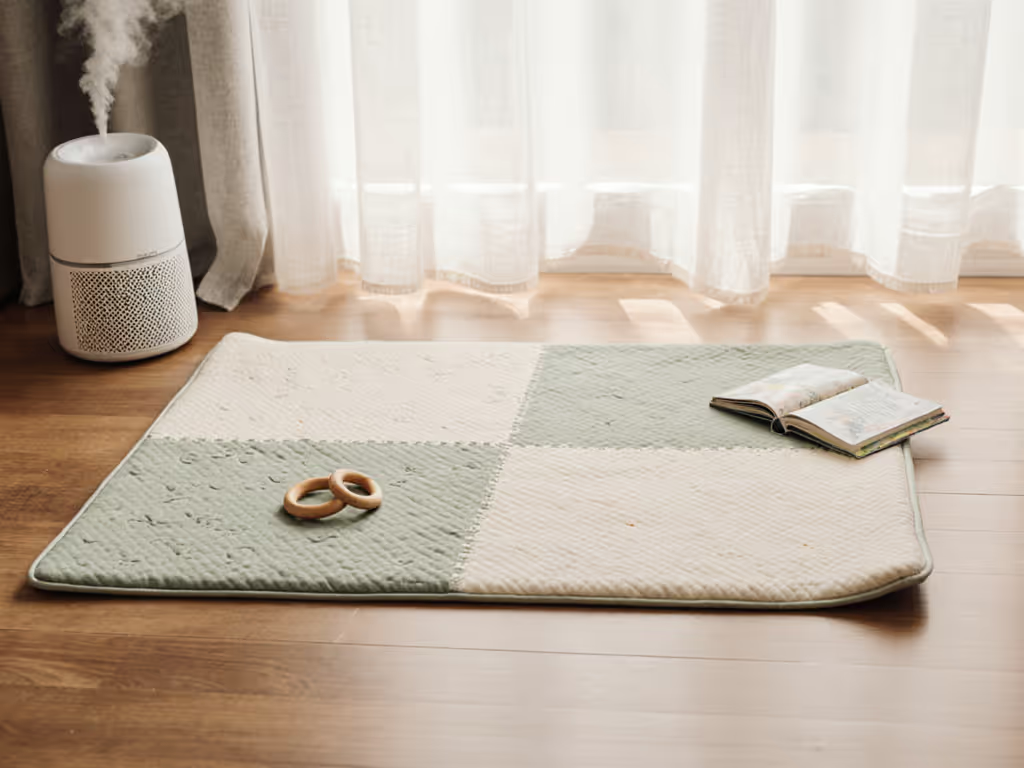
Preemie-Safe Play Mats: Evidence-Based Selection Guide

Multi-Gen Play Mat Setup for Shared Living Spaces
